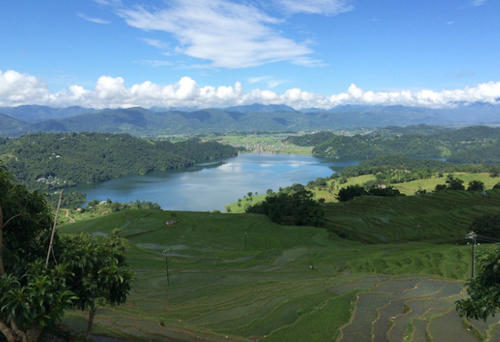Integrated Landscape Initiatives in South and Southeast Asia

Bioversity International scientists carry out a systematic assessment of characteristics and outcomes of Integrated Landscape Initiatives in South and Southeast Asia, addressing several challenges and suggestions for improvement.
In the Landscape and Urban Planning journal, Bioversity International scientists and partners reviewed 166 integrated landscape initiatives in the region of South and Southeast Asia, revealing numerous obstacles and opportunities to achieve positive outcomes in landscape-scale initiatives. Some obstacles include a lack of involvement of the private sector, uneven participation of stakeholders on varying levels of design and implementation, damaging power dynamics and many others that interfere with the complex and demanding nature of integrated landscape initiatives.
Integrated Landscape Initiatives (ILIs) seek to unify policy and practice to address multiple challenges across a region, including conservation of biodiversity, maintenance of agricultural ecosystems and sustainable livelihoods. Asia has had integrated landscapes long before the term ILI was coined, such as the rice terrace systems of Ifugao in the Philippines, or the simpukng forest gardens of Indonesia. However, very little is known about modern integrated initiatives and projects, whether they work or not, and what might facilitate their better functioning. Research conducted by Bioversity International and partners brings about a pioneering assessment of properties and limitations of ILIs in South and Southeast Asia, to complement previous assessments in Europe, Africa and Latin America, Latin America and the Caribbean.
The survey showed that ILIs in South and Southeast Asia, just like those in Latin America and Africa, tend to be most commonly motivated by a need for conservation and the sustainable use of natural resources, followed by agricultural development. Bioversity International’s Camilla Zanzanaini, co-author of the publication, reminds us to note a covert reasoning behind such results: “Conservation groups tend to push for ‘integrated’ landscape initiatives in order to convince more communities and stakeholders who are usually not interested in conservation alone (but who clearly affect the resources within the landscape), to commit to creating more sustainable landscapes.”
In fact, livelihoods' strengthening was the next key motivator, but investments in this area lagged behind other domains, with the critique that international conservation organizations prioritize the welfare of endangered wildlife over human lives in the same environments.
An important question that arose from the survey on investments and stakeholder motivations was whether ILIs are driven by the international conservation and development agenda, rather than the specific needs of the communities inhabiting the landscapes. This concern is supported by the documented discrepancy in stakeholder participation in varying stages of ILI development. Donors are mostly involved in the design stages, whereas local groups, especially women and indigenous people, are only involved in the implementation of activities.
An absence of grassroots stakeholders and minority groups in the planning phases of ILIs is particularly problematic since the opposite often leads to better outcomes for the ILIs. “Initiatives that have higher donor involvement in the implementation phases, and whose design stages are more greatly influenced by local stakeholders, report higher outcomes,” confirms Zanzanaini. The paper suggests reconsidering current operational approaches to landscape management and identifying new ways to include these voices at the design stage.
The survey also revealed that a majority of ILIs in South and Southeast Asia struggle to continue beyond their initial funding cycles. Longevity of ILIs is crucial for a greater number of outcomes, but 67% of the survey respondents voiced sustainability as a key concern, especially in regards to finances and stakeholder engagement. Numerous respondents reported difficulties in sustaining relationships with government actors and other relevant stakeholders in their initiatives, partly due to complex and entrenched power dynamics that pose as a barrier to genuine multi-stakeholder landscape management.
In addition, the private sector is scarcely involved at all. “This is problematic,” Zanzanaini pointed out, “considering that most often, the landscapes or ecosystems that are most under threat are due to private sector operations, especially extractive industries such as mining and logging.”
Furthermore, some of the survey respondents noted: “Timescales were too long and benefits too small to generate stakeholder interest and participation.” The authors of the paper confirmed that the impacts of any initiative at the landscape scale often take decades to be seen, making it hard to convince people to invest time, resources and money, with an outlook on the larger picture.
“ILIs are challenging and complex, but ultimately rewarding,” reminds Zanzanaini, adding that transformational outcomes can only be obtained when the initiatives are executed under quality coordination, with fair stakeholder engagement and a way to engage people to see the big picture. “The integrated system is in theory incredibly promising for agriculture, conservation and livelihoods,” Zanzanaini concluded, “but we need to remember that most people are usually concentrated on their small piece of the puzzle, so we need to always think from their perspective and what compromises stakeholders are willing to make to ultimately benefit everyone.”
As a next step, researchers that form part of the 'Landscapes for People, Food and Nature' initiative (including Bioversity International) plan to conduct a cross-continental analysis using data from all four continents.
__________
Read the full paper on Integrated Landscape Initiatives in South and Southeast Asia, which is open access until 28 June 2017, or read more about Integrated Landscapes Initiatives in Africa and Latin America, Europe and Latin America and the Caribbean.
All four papers are part of the Landscapes for People, Food and Nature initiative. and contribute to the CGIAR Program on Water, Land and Ecosystems, which is supported by CGIAR Fund Donors.
Photo: Rice terrace system in Begnas village area, Begnas Village, Kaski District, Nepal. Photo credit: Bioversity International/J.Zucker
